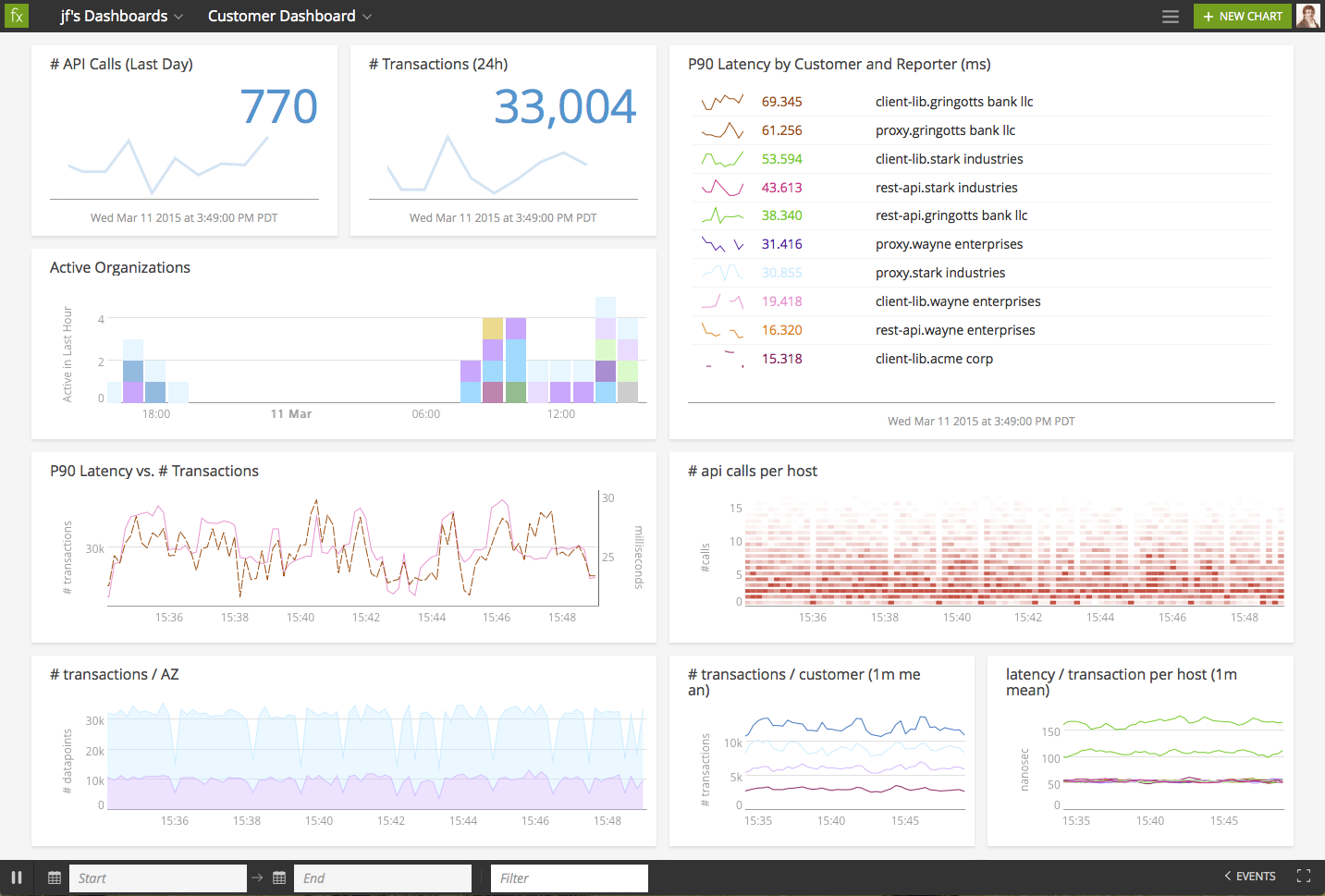Continuous monitoring is critical for ensuring that IT assets and controls meet business requirements and expectations—constantly assessing and validating them for quality, integrity, and security. This involves not only identifying infrastructure bugs and issues, but also issues with applications and their components. Deteriorating software performance and downtime can be just as devastating to the business as a data breach or security compromise, and is quite often a red flag for cyber attacks in progress. Two leading solutions, Datadog and SignalFx, can help you spot and decipher the smoke signals before your business goes up in flames.
Though both can be roughly categorized as application performance monitoring (APM) tools, Datadog and SignalFx—as well as most monitoring platforms these days—encompass a broad set of capabilities beyond traditional monitoring and alerting. This includes real-time analytics, infrastructure monitoring, elastic cloud monitoring, and more.
Datadog
Datadog is a monitoring solution that utilizes an agent-based architecture to monitor 100s of different OSes, web apps, containers, cloud hosts, and more. In addition, custom agents can be written to address more unique use cases. Starting as a SaaS-based monitoring service for web applications back in 2011, the platform now includes infrastructure management and network monitoring capabilities on top of web/mobile app monitoring.

Dashboards displaying graphs, charts, and rolling timelines give enterprises the ability to monitor their cloud infrastructures for efficiency and performance visually.
SignalFx
Previously known as SignalFuse, SignalFx came out of stealth mode last year with the announcement of its distributed application / infrastructure monitoring platform. Its pedigree is worth noting: co-founder Phillip Liu's work as a software engineer at then rapidly-growing social network Facebook was instrumental in his subsequent company's monitoring solution. Working on a team developing systems management tools at-scale to support the social network's rapidly expanding distributed architecture, Liu was able to carry much of that experience forward to alleviate similar issues faced by today's digital enterprises.

Like Datadog, SignalFx's user interface is dashboard-driven and chock full of charts/graphs for analyzing correlating, and comparing performance metrics and events.
Side-by-Side Scoring: Datadog vs. SignalFx
1. Capability Set
Both monitoring platforms offer up powerful metrics in a streamlined dashboard. Datadog, however, offers some extended capabilities like the ability to collaborate on events and outages in real-time—a feature highly useful for analyzing an issue's audit trail to inform remediation efforts.
2. Ease of Use
Both monitoring platforms are straightforward, intuitive SaaS apps that feature quick dashboard creation capabilities and easy-to-configure options and data filters. Datadog, however, requires some command line scripting for its Windows/Mac installs and its agent installations have been known to be problematic upon setup.
3. Community Support
Datadog is highly active in its community-building efforts and maintains a repository of APIs, libraries, and community contributions in support of its platform—as well as an active GitHub account. SignalFx also maintains an active GitHub account but doesn't have as many community support resources as Datadog.
4. Release Rate
Both Datadog and SignalFx are born-in-the-cloud, continuously updated SaaS applications—in fact, they were designed to monitor SaaS offerings like themselves. Despite being founded in 2011, Datadog launched its first product in 2013; as mentioned earlier, SignalFx came out of stealth mode in 2015.
5. Pricing and Support
A monitoring system won't troubleshoot a configuration error. A configuration test script will.
Both monitoring platforms are reasonably priced with a low barrier to entry—Datadog's lowest paid plan is $15/host per month for up to 500 hosts, while SignalFx comes out to about $15/server per month, billed annually. Both also offer 14-day free trials for users to demo their platforms before purchasing, as well as comprehensive support options with free/paid options for online and phone support.
6. API and Extensibility
Datadog's REST API make it easy to get data in and out of the platform; similarly, SignalFx's HTTP API can be used for sending data to the platform and manipulating metadata; additionally, it provides client libraries for Node.js, Python, Ruby, and Go.
7. 3rd Party Integrations
Datadog features over 100 integrations: VictorOps, Bitium, Slack, PagerDuty, Amazon, Docker, and more. That said, SignalFx—with its impressive set of integrations—is not to be outdone in this category. The platform supports a myriad of vendors and 3rd party solutions, from Mesos and AWS to Okta and Slack.
8. Companies that Use It
Though SignalFx and Datadog are both in use by prominent organizations, the latter seems to command more enterprise attention—with Adobe, Samsung, Facebook, HP Cloud Services, Electronic Arts, and Spotify as marquee customers, among others. SignalFx is popular among prominent upstarts like Sunrun, Yelp, Onshape, Tapjoy, and Zenefits, to name a few.
9. Learning Curve
As modern SaaS-based platforms, both platforms are designed to move users quickly from account setup to monitoring their entire infrastructure and application stack. That said, Datadog—with more time on the market—certainly has more water under the bridge when it comes to refinements for a smoother learning curve.
10. Security rating
Datadog's scores a respectable 855 in UpGuard's security rating algorithm while SignalFx also scores lower at 684.
Scoreboard and Summary
In short, with more time on the market and a large footprint in the enterprise, Datadog may be more ideal for large firms with both on-premise and cloud-based infrastructures. On the other hand, SaaS startups with modern, highly-distributed apps and complex environments will find a complementary monitoring platform in SignalFx. Both options are reasonably priced, offer a myriad of integrations, and will scale with your organization's needs.




